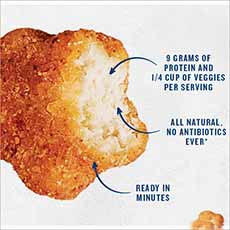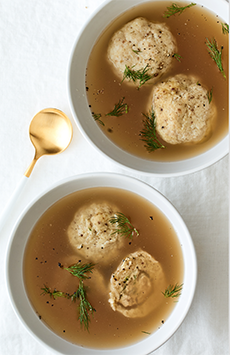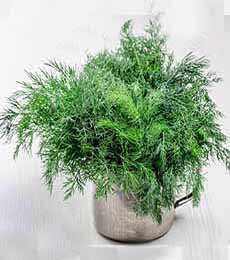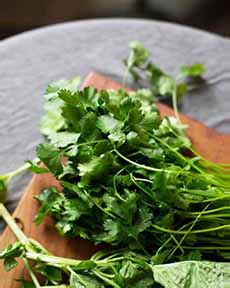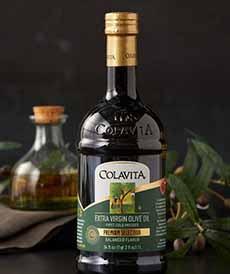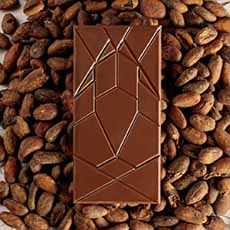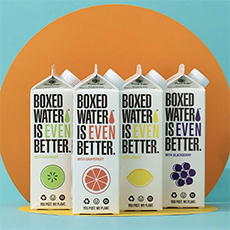|

[1] Enjoy these skewers as an appetizer, snack, or side (photos #1 and #2 © Mrs. T’s Pierogies).
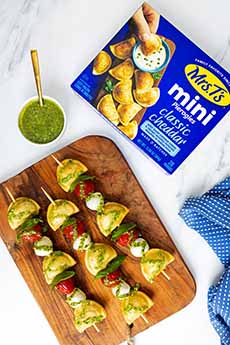
[2] Delicious with a beer.

[3] Bocconcini, bite-size mozzarella balls, from That’s Amore Cheese. They’re also available smoked (photo © That’s Amore).

[4] Fresh basil enhances so many recipes (photos #4 and #5 © Good Eggs).
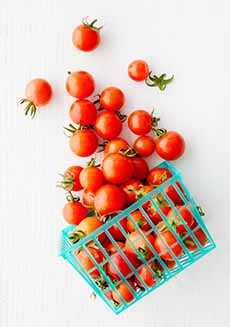
[4] A cherry tomato completes the skewer.
|
|
Mrs. T’s always has great things to do with pierogies. This recipe uses your air fryer.
Mrs. T’s Pierogies calls this recipe “Margherita Pizza Skewers.” We call it food fun: a snack, a light lunch with a salad, or a side at dinner (just lay the skewer across the plate).
It’s a take on Margherita pizza on a stick. The recipe:
Substitutes the pizza sauce and shredded mozzarella with cherry tomatoes and a bocconcini mozzarella ball.
Substitutes a mini pierogi for the pizza crust.
Mrs. T’s mini pierogies sit well on a skewer, and you can find many recipes that use them on Mrs. T’s website.
Pierogies are stuffed pasta pockets, just like Chinese soup wontons and Italian ravioli.
Mrs. T’s Pierogies calls this recipe “Margherita Pizza Skewers.” We call it food fun: a snack, a light lunch with a salad, or a side at dinner (just lay the skewer across the plate).
This recipe uses Mrs. T’s mini pierogies, a bite-size __ that sits well on a skewer.
> The history of pierogies.
RECIPE: “MARGHERITA PIZZA” SKEWERS WITH PIEROGIES
The original recipe used Mrs. T’s Mini Classic Cheddar Pierogies but we chose Mini Classic Onion Pierogies, filled with creamy whipped potatoes and diced onions.
Prep time is 10 minutes and cook time is 25 minutes.
Fresh pesto is more flavorful than store-bought, but if you want to save time, you can purchase the pesto.
Ingredients For The Pizza Skewers
1 box (12.8 ounces) Mrs. T’s Mini Classic Cheddar Pierogies
3 cups cherry tomatoes
2 tablespoons olive oil, plus additional for brushing pierogies, divided
1 teaspoon salt
1/2 teaspoon ground black pepper
1/2 teaspoon oregano
1-2 cups mozzarella balls (bocconcini), 18 total
Fresh basil leaves
Bamboo skewers (10 inches)
For The Pesto
2 cups fresh basil
2 garlic cloves, peeled
1/2 cup olive oil
1/4 cup pine nuts
1/4 grated Parmesan cheese
Salt, to taste
Gound black pepper, to taste
Preparation
1. PREHEAT an air fryer to 400°F.
2. COOK the tomatoes. In a small bowl, combine cherry tomatoes, olive oil, salt, ground black pepper, and oregano; toss to coat.
3. TRANSFER the tomatoes to the air fryer tray or basket. Cook in the air fryer for 10 minutes, or until the tomatoes are slightly charred. Remove from the air fryer and set aside.
4. LAY the pierogies on the same tray or basket. Make sure not to overlap them. Lightly brush each side with olive oil. Cook for about 12 minutes, or until they’re golden brown and crispy. Flip halfway through cooking.
5. MAKE the pesto. In a food processor, combine the basil, garlic, olive oil, pine nuts, Parmesan cheese, and salt and pepper to taste. Process until smooth.
6. ASSEMBLE the skewers. Add one pierogi to a bamboo skewer followed by one tomato, one mozzarella ball, and one basil leaf. Repeat with the ingredients until each skewer is filled. Drizzle with pesto.
|

